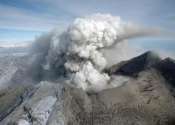Zero-dimensional transistor harvests bubble energy wasted during water electrolysis
(Phys.org) —When hydrogen is produced from water during electrolysis, some energy is lost as tiny bubbles. In a new study, researchers have demonstrated that 25-nm transistors—so small that they're considered zero-dimensional ...









